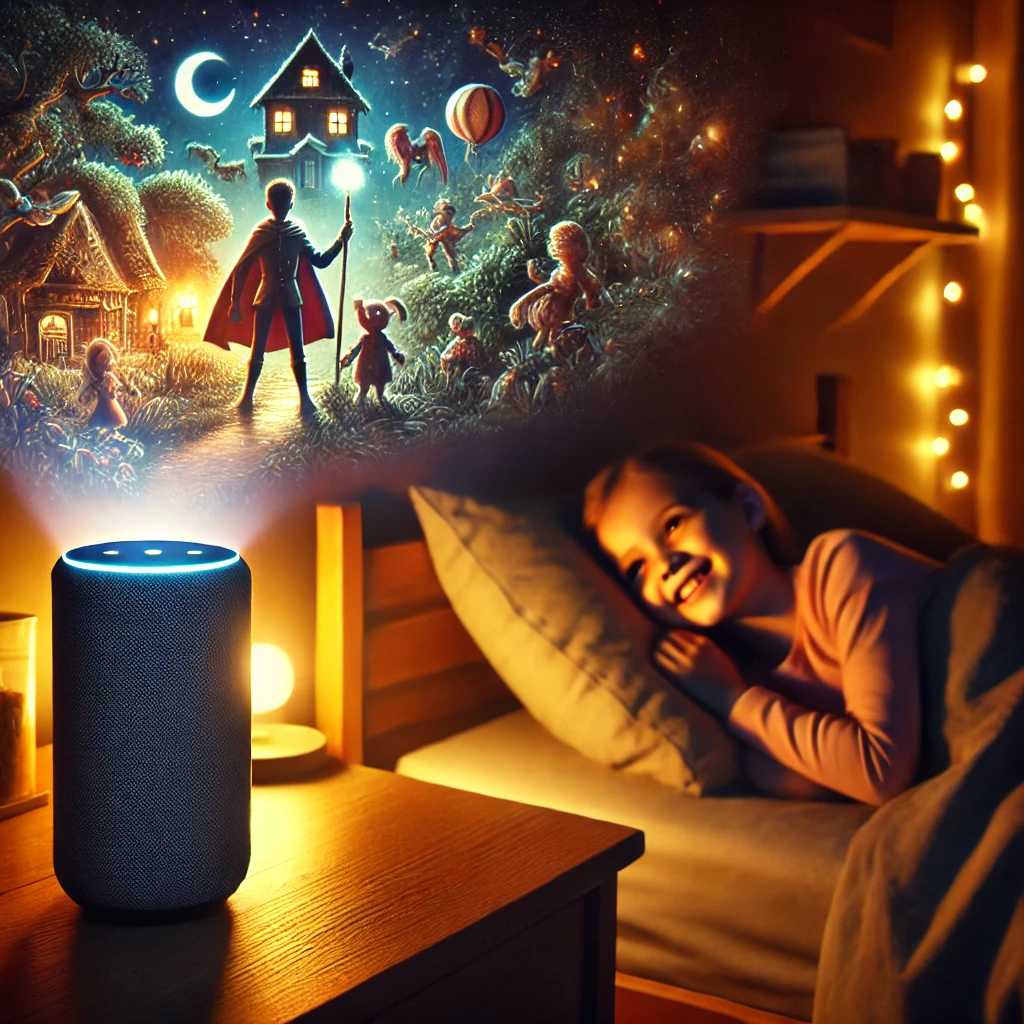Introduction
Artificial intelligence has seamlessly integrated into our daily lives, making automation more accessible than ever. From handling repetitive office tasks to generating creative content, AI models like ChatGPT have transformed how we interact with technology. But what if we could use AI to automate bedtime storytelling, ensuring a smooth and engaging routine for children and adults alike?
Scheduled tasks with ChatGPT turned bedtime stories is a fascinating use case that combines automation, personalization, and creativity. This article explores how scheduled AI-generated bedtime stories can enhance sleep quality, foster imagination, and make nighttime routines more enjoyable.
The Power of Bedtime Stories
Why Bedtime Stories Matter
For centuries, bedtime stories have been a cherished ritual, helping children relax, engage their imagination, and develop language skills. Studies show that bedtime storytelling can:
- Reduce stress and anxiety by creating a calming routine.
- Boost cognitive development by enhancing vocabulary and comprehension skills.
- Strengthen parent-child bonds through shared experiences.
- Improve sleep quality by signaling the brain that it’s time to wind down.
The Modern-Day Challenge
In today’s fast-paced world, parents often struggle to find time or energy to craft engaging stories every night. This is where AI steps in, offering a solution that personalizes bedtime storytelling while maintaining the magic of human creativity.
How Scheduled AI Bedtime Stories Work
Step 1: Setting Up Scheduled Tasks
With tools like cron jobs (Linux), Task Scheduler (Windows), or third-party automation services, users can schedule ChatGPT to generate and deliver unique bedtime stories at a specific time each evening.
Step 2: Personalizing the Story
ChatGPT can tailor stories based on:
- Child’s Name & Age – Making stories relatable and engaging.
- Themes & Preferences – Adventure, fairy tales, sci-fi, or historical.
- Learning Goals – Incorporating moral lessons, vocabulary expansion, or educational elements.
Step 3: Delivery Methods
Users can choose how the story reaches the listener:
- Smart Speakers (Alexa, Google Assistant) – Read aloud at bedtime.
- E-Readers & Tablets – Display text-based stories.
- Automated Email or SMS – Receive a new story before bedtime.
Benefits of AI-Generated Bedtime Stories
1. Consistency in Storytelling
Scheduled AI-generated stories ensure a steady routine, eliminating the last-minute struggle to come up with a fresh idea.
2. Endless Creativity & Variety
ChatGPT can generate unique plots daily, offering fresh narratives that prevent boredom.
3. Customization & Personalization
Unlike traditional storybooks, AI-driven stories can adapt to a child’s changing interests and learning needs.
4. Multilingual Capabilities
ChatGPT can craft bedtime stories in multiple languages, aiding bilingual learning and language exposure.
5. Encouraging Independent Reading
Older children can receive automated stories via email or an app, encouraging independent reading habits.
Real-World Applications
1. For Parents & Caregivers
Parents can pre-schedule bedtime stories for busy nights, ensuring their child enjoys a comforting routine even when they’re unavailable.
2. For Educators
Teachers can integrate AI-generated stories into learning schedules, using storytelling as an educational tool.
3. For Sleep Therapists
AI bedtime stories can be programmed to include calming elements, aiding in insomnia treatment and relaxation techniques.
4. For Content Creators & Authors
Writers can use ChatGPT to prototype children’s books or bedtime story collections, streamlining the creative process.
Addressing Potential Concerns
1. Loss of Human Connection?
Some argue that AI-driven stories might replace the traditional parent-child bonding experience. However, these stories can serve as a complement rather than a replacement, giving parents more flexibility.
2. Over-Reliance on Automation?
While AI can generate engaging stories, human creativity and warmth remain irreplaceable. Parents can customize AI-generated stories, adding personal touches to maintain an emotional connection.
3. Screen Time Before Bed?
If screen exposure is a concern, stories can be read aloud through smart speakers or printed for a screen-free experience.
The Future of AI Bedtime Stories
1. Interactive AI Storytelling
Future developments may include voice-interactive bedtime stories, allowing children to choose their own adventure paths.
2. AI-Generated Illustrations
Combining text with AI-generated artwork could create immersive bedtime story experiences.
3. AI-Assisted Sleep Analysis
Smart home systems may integrate bedtime stories with sleep tracking, adjusting storytelling elements based on sleep patterns.
Conclusion
Scheduled AI-generated bedtime stories bridge the gap between technology and tradition, providing an innovative solution for modern families. Whether it’s ensuring consistency, variety, personalization, or accessibility, ChatGPT’s storytelling capabilities offer a valuable tool for bedtime routines.
While AI should enhance rather than replace human interaction, the potential for creating a seamless, magical bedtime experience is undeniable. By leveraging scheduled AI storytelling, we unlock a new era of automated creativity and stress-free bedtime rituals.
Courtesy: Internet
Read Also:
AI Is Telling Bedtime Stories to Your Kids Now
The Uncanny and Unsettling World of AI Powered Bedtime Stories









+ There are no comments
Add yours